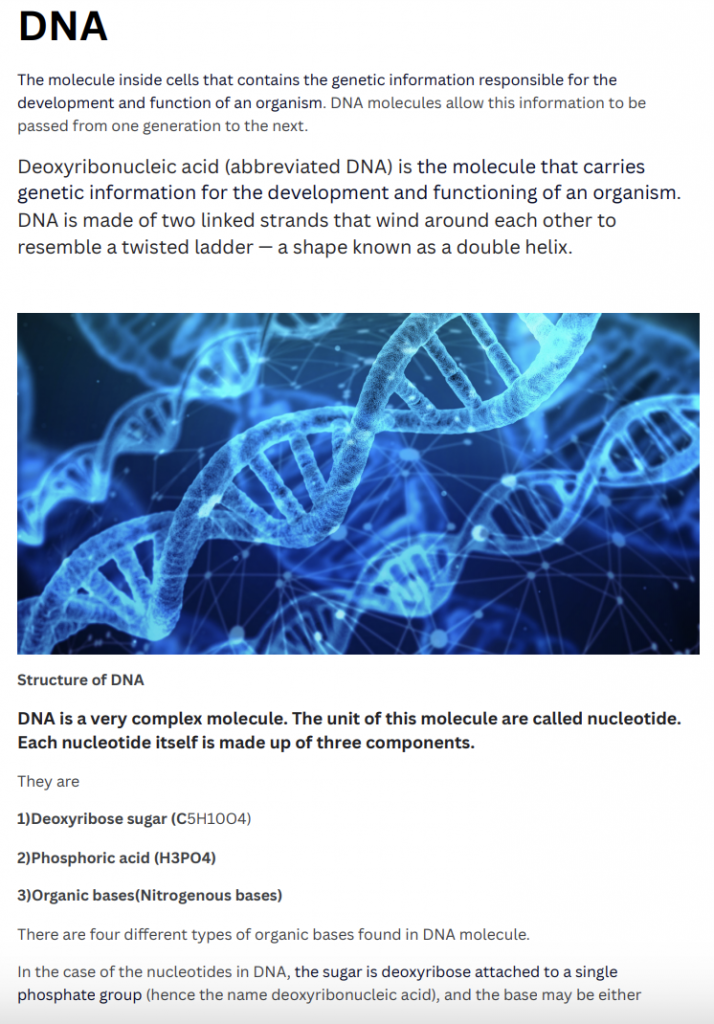Biology DNA Molecules (Grade A+)
Summary:
DNA, or deoxyribonucleic acid, is a complex molecule found inside cells that carries the genetic information responsible for the development and function of an organism. It consists of two strands that form a double helix structure resembling a twisted ladder. The building blocks of DNA are nucleotides, composed of deoxyribose sugar, phosphoric acid, and organic bases. There are four types of organic bases in DNA: adenine (A), cytosine (C), guanine (G), and thymine (T). These nucleotides combine to form the DNA molecule, with adenine and guanine being purine bases and cytosine and thymine being pyrimidine bases.
The structure of DNA was discovered by James D. Watson and Francis H. Crick in 1953 based on X-ray diffraction data provided by Maurice H. F. Wilkins. This discovery led to their Nobel Prize in 1962. Rosalind Franklin, an expert in X-ray crystallography, also made significant contributions to the understanding of DNA’s structure. DNA contains the instructions for an organism to develop, survive, and reproduce. These instructions are converted into messages that produce proteins, which carry out various bodily functions. DNA plays roles in replication, encoding information, mutation/recombination, and gene expression.
Most DNA is located in the cell nucleus (nuclear DNA). Still, a small amount can also be found in the mitochondria (mitochondrial DNA or mtDNA), which convert food energy into a usable form for cells. In the laboratory, DNA can be extracted from tissue samples, resulting in a sticky, translucent, whitish substance.
Excerpt:
Biology DNA Molecules
DNA
The molecule inside cells contains the genetic information responsible for the development and function of an organism. DNA molecules allow this information to be passed from one generation to the next.
Deoxyribonucleic acid (abbreviated DNA) is the molecule that carries genetic information for the development and functioning of an organism. DNA is made of two linked strands that wind around each other to resemble a twisted ladder — a shape known as a double helix.


Reviews